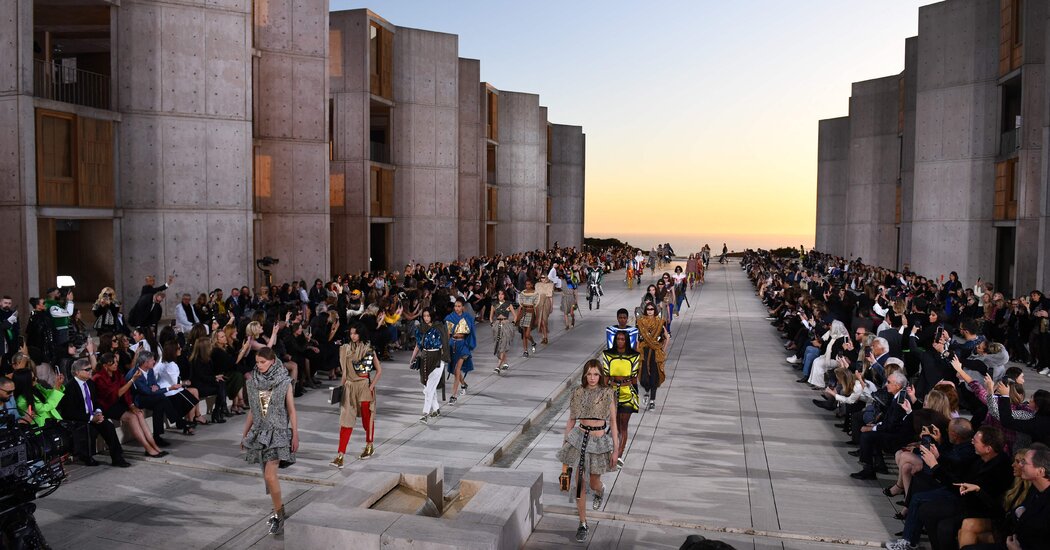
The guest of honor at the Louis Vuitton cruise show, held Thursday evening at the Salk Institute in San Diego, was not the Olympic skier Eileen Gu, though she walked the runway. It was not the brand ambassador Gemma Chan, though she was in the front row. It was the sun.
The sun? The ball of hot plasma 93 million miles away that happens to make life on earth possible?
Yup. Perfectly framed by the teak and concrete buildings created by Louis Kahn in the mid-1960s that accordion out around a central plaza, reflected in the ocean where the cliffs drop off into air, the sun presided over the show like a benign monarch. Combined with the ethos of the campus itself, dedicated to scientific advancement, it was hard not to think that the natural world and the efforts to change the disaster we have wrought would be on the agenda.
And they were, kind of. Though not in the 80-percent-of-the-fibers-are-recycled way we’ve come to expect (the way fashion so often talks about climate change and its role in it these days).
Rather, if the royal court of a time-traveling post-apocalyptic society was trying to figure out what to wear to a rave in the desert, here was the answer. It was celebratory and ominous all at once — full of goddesses and gladiators born in a Marvel action figure moment.
Nicolas Ghesquière, the artistic director of women’s wear for Vuitton, has made a signature out of mashing up his centuries, architecture and pop culture, and the results are getting increasingly uncompromising, in a truly interesting and weird kind of way. Often they’re not particularly pretty or even flattering, but they are almost impossible to ignore.
This time around he started with a processional of three elaborate gowns in heavy jacquard woven to mimic flowing lava with sweeping skirts and ruff-like cowls, peplums at the hips and a whisper of a train in the back. He continued into tank tops made from watery sequined scales worn with harem pants hung with heraldic swags of dun-colored fabrics that looked as if they had been dragged through the sand. Bare waists were roped off by armorial, grommeted leather belts under criss-cross tops of corrugated silver and gold leather; trench coats shimmered in iridescent orange; and knee-high boots had a holographic shine.
At the end came three models in bolero jackets with shoulders as wide as landing strips, under which a whole field of tinsel sprouted like some sort of freaky, futuristic ecosystem unto itself. It looked like a gesture of faith that no matter what, something will grow.
Yet San Diego is a long way for a French brand to go to paint a picture of a heroic world that may emerge from the shards of the old one, collaging its bits and pieces together.
To a certain extent, the whole idea of carting a collection across the Atlantic to tell that story for what amounts to 20 minutes in situ risks undermines the very point it is making. Even if, as a spokeswoman for Vuitton later said, collection travel for guests (not including The New York Times, which, like most viewers, watched remotely) and staff amounts to only “1 percent of Louis Vuitton’s global carbon footprint,” and they are committed to reducing the whole by 55 percent by 2030.
At some stage, ideally soon, fashion is going to have to wrestle with the message it is sending with these touring extravaganzas, no matter how compelling; with where, exactly, it wants to go. The choice is there, in the light of day.






